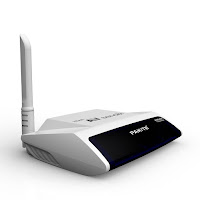How to Convert Cable TV to Wireless
Hardwiring a television to a cable outlet seems antiquated when more and more electronics are moving toward wireless technology. Convert your cable TV to wireless by using a wireless RF transmitter and receiver ( wireless av transmitter and receiver fit for RCA port device, and HDMI av sender fit for HDMI port device ) to transmit signals from the cable box to the TV. This gives you the freedom to move a television to the other side of the room or house without having to move the outlet as well. By choosing the right equipment, connecting the wireless transmitter and receiver, and configuring the wireless signal, you can enjoy cable television free from wires.
1 - Choose Wireless Transmitter-Receiver Equipment
Several brands and models of wireless transmitters and receivers that deliver RF signals are available, and each model offers different features and capabilities. These systems work on frequencies that do not interfere with other devices in the home, such as microwaves and cordless telephones. They typically operate at frequencies of 2.4 GHz and 5.8 GHz. Choose one that operates at a frequency different than the frequency of other devices in your home to achieve a good signal and a clear picture.
While many wireless transmitters and receivers work for a single television, there are a handful that offer expandability options. To connect several televisions to a single cable outlet wirelessly, choose a system that has multiple receivers and a transmitter that can accommodate them.
2 - Connect the Wireless Transmitter to the Cable Box
The wireless transmitter connects directly to the wall outlet or the cable box. Connect the coaxial cable from the wall to the "RF IN" port on the transmitter. If you are connecting it to a cable box, connect a line from the "RF OUT" connector on the cable box to the "RF IN" port on the transmitter. Connect the AC adapter to the transmitter and plug it into a standard outlet. Power the device on and select the channel output.
3 - Connect the Wireless Receiver to the TV
The wireless receiver connects directly to the television using either an HDMI cable or a coaxial cable. Choose a short cable so that it is easy to conceal the receiver behind the television. Choose a longer cable to conceal the receiver inside an entertainment system.
Connect one end of the cable to the receiver and the other end to the appropriate HDMI or coaxial port on the television. Connect the AC adapter to the receiver and plug it into an outlet. Power the device on and select the channel output that matches the channel you selected on the transmitter. Repeat this process for all receivers.
4 - Set Up Your Television
When connecting an external device to a television, like a DVD player, VCR, or cable box, always plug them into the proper inputs. From the input menu on the screen, select the one that you connected the receiver to. If you use a coaxial connection, tune the television to the channel selected on the devices. For many televisions, this is channel 3. If you connect the receiver using an HDMI cable, tune the television to the appropriate HDMI input.
5 - Configure Your Wireless Signal
The transmitter and receiver each have a paddle or antenna that allows the two devices to communicate with each other. You may need to adjust the paddles on occasion to get a clearer signal. When first installing the system, point the paddles toward one another. After initial installation and turning on the television, make minor adjustments to the receiver until you obtain the clearest picture.
6 - Install the IR Remote Extender
If the television is in a different room and the cable outlet or box in another, install an IR remote extender so that you can use the standard remote. This boosts the IR sensitivity so that you do not have to worry about furniture or walls blocking the signal. Install the IR extender to the wireless transmitter and then place the receiver in an open area. Typical placement is near the IR receiver of the cable box. You can use the remote as normal to control the television.
Recommend reading:
300 meter HDMI wireless video transmitter
Audio and video signals getting interference
Did you have HDMI Wireless AV Sender?
What is HDMI Port



